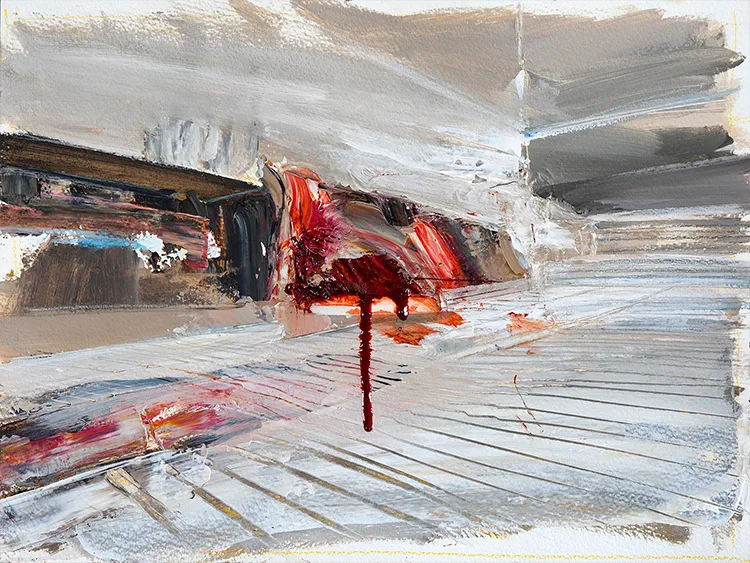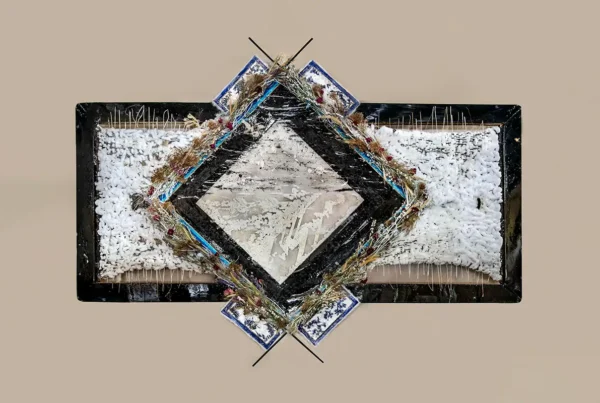“Watching cities get torn apart made me see buildings not just as structures but as bodies—wounded.”
From Minsk to Hamburg: The Artistic Evolution of Helen Shulkin
Helen Shulkin, an artist hailing from Minsk, Belarus, and now based in Hamburg, Germany, has undergone a profound artistic transformation throughout her career. Her journey began at the Belarusian State University, where she studied Fine Art and Drawing under the guidance of Professor Shikulov. The stark, utilitarian architecture of the Soviet era in her homeland laid the foundation for her artistic vision. However, it was the posturban and harbor structures in Hamburg that deeply influenced her work, leading her to explore the complex interplay between architecture and human form.
The invasion of Ukraine in 2022 marked a pivotal moment in Shulkin’s artistic evolution. The devastation of cities and the destruction of buildings resonated with her on a profound level, transforming her perception of architecture. She began to see buildings not merely as structures but as bodies capable of being wounded. This realization led to a significant shift in her art, where she started portraying architecture as human anatomy. Her canvases became operating tables, where she meticulously dissected the intricate relationship between human and architectural anatomy. The scars on buildings mirrored those on human bodies and psyches, resulting in a raw exploration of these connections. Her work now blends flesh with concrete, bones with steel, creating a haunting visual narrative.
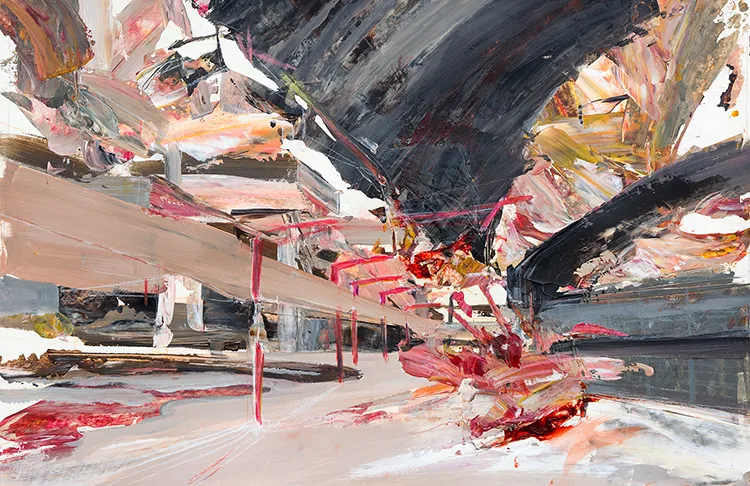
Helen Shulkin: The Anatomy of Artistic Expression
Helen Shulkin’s artistic style is a raw, unfiltered exploration of the complex relationship between architecture and the human body. Her work combines realistic elements with abstract forms to convey deep emotional and physical truths. By using oil on transparent grounded linen and employing a scalpel technique on paper, she adds layers of texture and depth to her pieces, inviting viewers to engage intimately with her art.
The use of oil on transparent grounded linen offers a unique texture and depth, allowing for the layering and interplay of light. This technique creates a haunting, almost ghostly quality, akin to painting on skin. Her scalpel technique on paper, born from a desire to be more surgical in her approach, involves scoring into acrylic paint to reveal the underlying layers. This method adds a raw, tactile dimension to her work, emphasizing the visceral connection she seeks to express. Through these techniques, Shulkin captures the essence of human experience and architectural form, creating a powerful, immersive experience for the viewer.
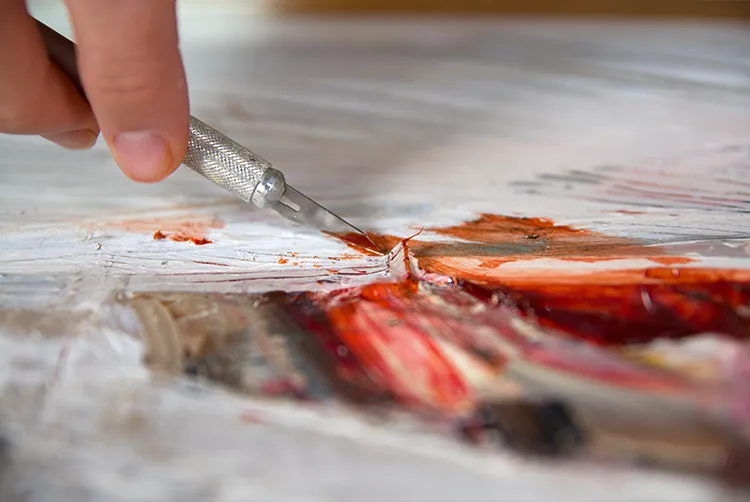
The Sanctuary of Creation
For Helen Shulkin, her workspace is more akin to a surgery table than a traditional artist’s studio. She requires a sterile, uncluttered environment with bare essentials, a wide, clean surface for her tools, and an abundance of natural light. This minimalist setting allows her to focus intensely on her work, eliminating distractions and creating a sanctuary for her creative process.
Distractions are meticulously kept at bay, with her phone turned off and the door shut. The outside world is a noisy, relentless beast, but within her studio, she finds peace and concentration. When her mind starts to wander, she refocuses with the precision of a scalpel, delving into the layers, cuts, and exposed underbelly of her canvas. This disciplined approach enables her to explore the depths of her subject matter, merging the boundaries between the human body and architectural form.
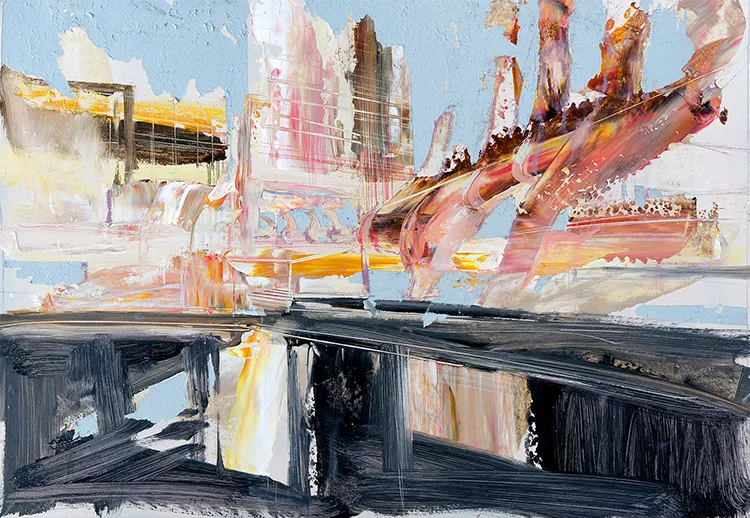
Helen Shulkin: Influences and Aspirations
Helen Shulkin’s work is influenced by a diverse range of artists, architects, and philosophers. The deconstructivist architecture of Frank Gehry and Zaha Hadid, along with the brutalist structures of the Soviet era, have significantly shaped her approach. Philosophically, the existential musings of Jean-Paul Sartre and Maurice Merleau-Ponty inspire her to explore the deeper connections between human experience and architectural form. Painters like Francis Bacon, known for his visceral, twisted forms, and Anselm Kiefer, with his stark emotional landscapes, have also left a lasting impact on her artistic journey.
Shulkin’s aspirations extend beyond traditional mediums and canvas. She dreams of creating an immersive installation—a labyrinthine space where visitors can walk through the fractured ribs and exposed nerves of a ‘living’ city. This ambitious project would blend sculpture, painting, and digital projections, creating an experience that engages all the senses and dissolves the boundaries between human and architectural forms. Through this immersive installation, Shulkin aims to further explore and convey the profound connections between the body and architecture, offering viewers a unique and transformative experience.
